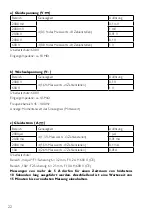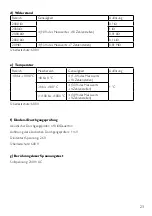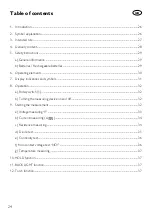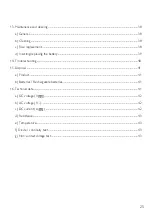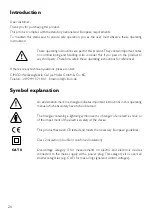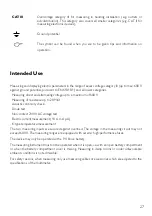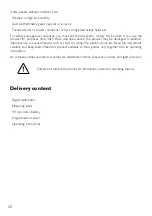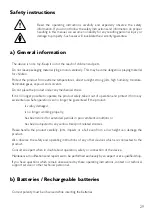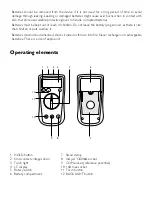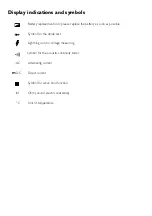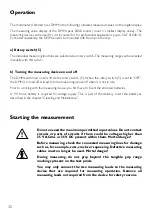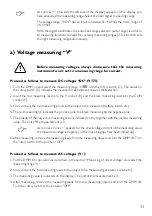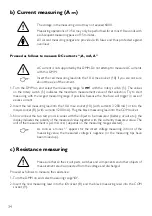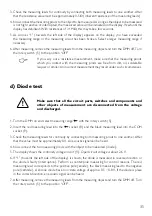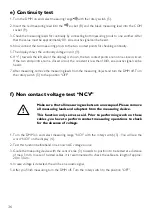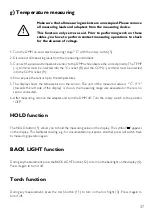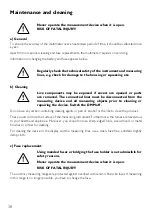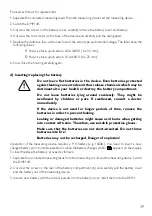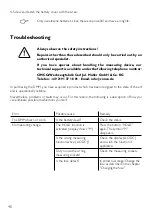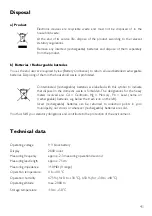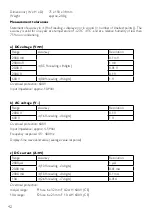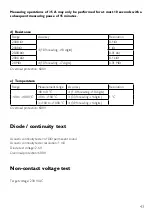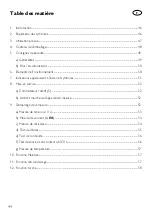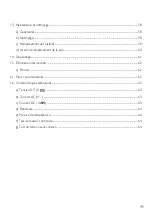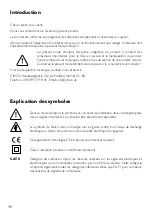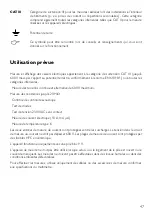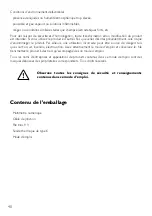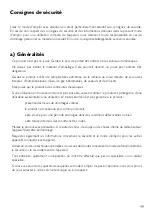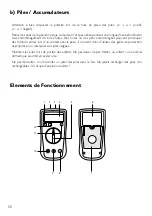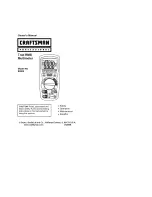
35
3. Check the measuring leads for continuity by connecting both measuring leads to one another. After
that the resistance value must be approximately 0.5
Ω
(inherent resistance of the measuring leads).
4. Now connect the measuring prods to the object to be measured. As long as the object to be measured
is not high-resistive or interrupted, the measured value will be indicated on the display. Wait until the
display has stabilised. With resistances of >1 M
Ω
, this may take a few seconds.
5. As soon as “1” (towards the left side of the display) appears on the display, you have exceeded
the measuring range or the measuring circuit has been broken. Select a larger measuring range if
necessary.
6. After measuring, remove the measuring leads from the measuring object and turn the DMM off. Turn
the rotary switch (5) to the position “OFF”.
If you carry out a resistance measurement, make sure that the measuring points
which you contact with the measuring prods are free from dirt, oil, solderable
lacquer or similar. An incorrect measurement may result under such circumstances.
d) Diode test
make sure that all the circuit parts, switches and components and
other objects of measurement are disconnected from the voltage
and discharged.
1. Turn the DMM on and select measuring range
with the rotary switch (5).
2. Insert the red measuring lead into the
socket (8) and the black measuring lead into the COM
socket (9).
3. Check the measuring leads for continuity by connecting both measuring prods to one another. After
that the value must be approximately 0 V. An acoustic signal can be heard.
4. Now connect the two measuring prods with the object to be measured (diode).
5. The display shows the continuity voltage in volt (V). Open-circuit voltage is about 2.6 V.
6. If “1” (towards the left side of the display) is shown, the diode is measured in reverse direction or
the diode is faulty (interruption). Perform a counter-pole measuring for control reasons. The red
measuring lead corresponds to the positive pole (anode), the black measuring lead to the negative
pole (cathode). A silicone diode has an on-state voltage of approx. 0.5 – 0.8 V. If the diode is place
in the correct direction, an acoustic signal can be heard.
7. After measuring, remove the measuring leads from the measuring object and turn the DMM off. Turn
the rotary switch (5) to the position “OFF” .
Summary of Contents for 11 1406
Page 87: ...87...


